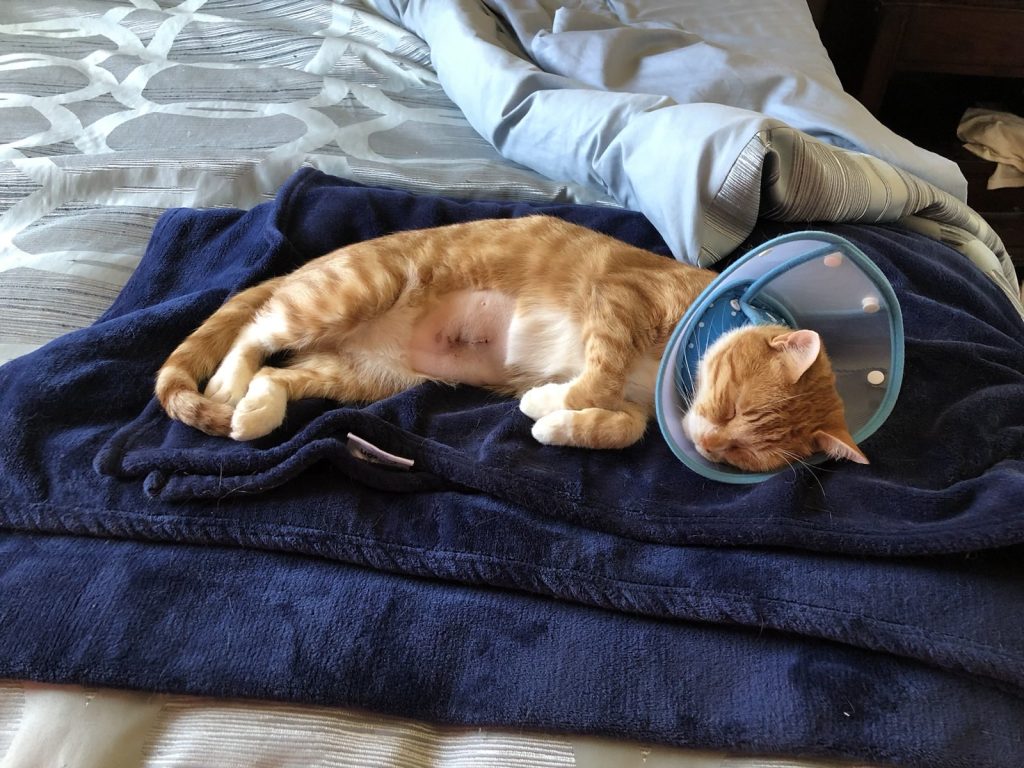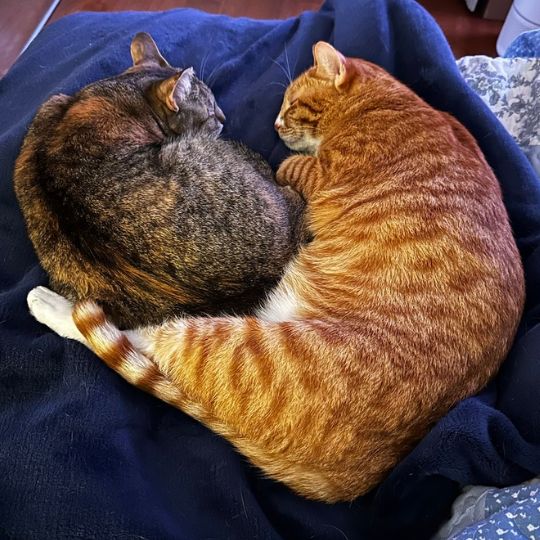Discover the Benefits of Stem Cell Therapy for Cats
Meet Kai, an orange tabby with a larger-than-life personality and an incredible story of healing. Adopted from a San Diego cat café, Kai faced serious health challenges that led us down an unexpected path: stem cell therapy. Here's what we learned along the way.
Kai's Story: A Journey Through Illness
When we first brought Kai home, we had no idea about the health struggles that lay ahead. Our vibrant, energetic tabby soon developed a cascade of concerning symptoms:
- Chronic parasites
- Persistent diarrhea
- Severe inflammation throughout his body
- Eventually, a painful condition called stomatitis
What is Stomatitis?
Stomatitis is a painful inflammatory condition affecting the mouth's mucous membranes. For Kai, it became so severe that eating was agonizing. After trying various treatments, our veterinarian recommended extracting eight of his teeth to provide relief.
The dental surgery helped, but Kai's underlying inflammation persisted. That's when our vet suggested something we'd never heard of: stem cell therapy.

What is Stem Cell Therapy?
Stem cell therapy is a regenerative medical treatment that harnesses the body's own healing mechanisms. Here's how it works:
The Science Behind It
Stem cells are unique cells capable of:
- Developing into different cell types
- Promoting tissue repair and regeneration
- Reducing inflammation
- Modulating immune responses
Types of Stem Cell Therapy
There are two primary approaches:
Autologous Therapy
Using the pet's own stem cells harvested from their body (usually from abdominal fat). This approach:
- Eliminates rejection risk
- Uses the animal's natural healing capacity
- Requires a harvesting procedure
Kai underwent autologous therapy using cells harvested from his abdominal fat.
Allogeneic Therapy
Using donor stem cells from another animal. This approach:
- Doesn't require harvesting from the patient
- Can be administered immediately
- May have a slight rejection risk
Conditions Treated with Stem Cell Therapy
Stem cell therapy shows promise for various conditions across multiple species:
For Cats
- Stomatitis (like Kai's condition)
- Chronic kidney disease
- Inflammatory bowel disease (IBD)
- Arthritis
- Hip dysplasia
- Certain autoimmune conditions
For Dogs
- Osteoarthritis
- Hip and elbow dysplasia
- Tendonitis and ligament injuries
- Chronic kidney disease
- Inflammatory bowel disease
- Degenerative myelopathy
For Other Pets
- Horses: Joint injuries, tendon damage
- Rabbits: Joint conditions, tissue injuries
Kai's Treatment Experience
The Procedure
Kai's stem cell therapy involved several steps:
- Harvesting: Cells were collected from his abdominal fat under general anesthesia
- Processing: The cells were processed in a specialized laboratory
- Banking: Extra cells were frozen for future treatments
- Administration: Activated stem cells were injected at targeted sites

The Recovery Process
Recovery proved challenging for both Kai and us as caregivers:
- Medication administration: Round-the-clock dosing was required
- Wound monitoring: We had to watch the surgical sites carefully
- Activity restriction: Keeping an active cat calm was no easy task
- Frequent vet visits: Close monitoring ensured proper healing
The recovery period tested our patience and dedication, but Kai was a trooper throughout.
The Results: Kai's Transformation
Immediate Outcomes
Within weeks of treatment, we noticed:
- Significant reduction in inflammation
- Improved appetite and eating comfort
- Increased energy and playfulness
- Better overall quality of life
Long-Term Benefits
Years later, Kai continues to thrive:
- Annual examinations show lasting relief
- Inflammation levels remain low
- He's maintained a healthy weight
- His personality shines brighter than ever

The Challenges
While Kai's treatment was ultimately successful, we did face some setbacks:
- The banking process for his cells wasn't perfect
- Banked cells became non-viable over time
- This prevented planned follow-up treatment sessions
- We learned that cell banking technology is still evolving
Clinical Evidence and Research
Growing Support
Research institutions are increasingly studying stem cell therapy for pets:
- UC Davis School of Veterinary Medicine conducts ongoing research
- Multiple veterinary schools have stem cell programs
- Clinical trials continue to expand our understanding
- Published studies show promising results
Improving Accessibility
The field is becoming more accessible:
- Pet insurance beginning to cover advanced treatments
- More veterinary clinics offering the service
- Costs gradually becoming more manageable
- Technology improvements increasing success rates
Is Stem Cell Therapy Right for Your Cat?
When to Consider It
Stem cell therapy may be worth exploring if your cat has:
- Chronic inflammatory conditions
- Joint problems or arthritis
- Conditions not responding to conventional treatment
- Quality of life issues from pain or discomfort
Factors to Consider
Before pursuing stem cell therapy, think about:
- Cost: Treatment can be expensive ($2,000-$4,000+)
- Veterinary expertise: Requires specialized training
- Your cat's overall health: General anesthesia is required
- Recovery commitment: You'll need to provide intensive post-op care
- Realistic expectations: Results vary by individual and condition
Questions to Ask Your Veterinarian
- Is my cat a good candidate for stem cell therapy?
- What results can we realistically expect?
- What are the risks and potential complications?
- How many treatments might be needed?
- What's the expected recovery timeline?
- Are there alternative treatments we should try first?
The Financial Investment
Typical Costs
Stem cell therapy expenses typically include:
- Initial consultation and diagnostics: $200-500
- Cell harvesting procedure: $1,500-2,500
- Cell processing and banking: $500-1,000
- Follow-up treatments: $500-1,000 each
- Post-operative care and medications: $200-500
Insurance Coverage
Increasingly, pet insurance policies are covering:
- Stem cell therapy for approved conditions
- Portions of the procedure costs
- Follow-up treatments
- Related diagnostic work
Check with your insurance provider about specific coverage.
Alternative and Complementary Treatments
Stem cell therapy works best as part of a comprehensive approach:
- Pain management: NSAIDs or other pain relievers
- Physical therapy: For mobility issues
- Dietary changes: Anti-inflammatory diets
- Supplements: Omega-3s, glucosamine, chondroitin
- Environmental modifications: Ramps, soft bedding
- Regular monitoring: Ongoing vet checkups
The Emotional Journey
Our Perspective
Watching Kai suffer and then recover taught us invaluable lessons:
- The importance of advocating for our pet
- Trust in veterinary expertise
- Patience during recovery
- The resilience of animals
- How far veterinary medicine has come
Was It Worth It?
Without hesitation, yes. Looking at Kai today (healthy, playful, and pain-free), we know we made the right decision. In fact, I'm not sure he would be with us if he didn't undergo this treatment.
The investment of time, money, and emotional energy pales in comparison to the years of quality life Kai has enjoyed.
The Future of Stem Cell Therapy
Emerging Developments
The field continues to evolve:
- Improved cell banking techniques
- Better targeting of specific conditions
- Combination therapies with other treatments
- More affordable options
- Expanded research and clinical trials
Hope for Pet Owners
As technology advances and becomes more accessible, stem cell therapy offers hope for pets with conditions that were once considered untreatable or manageable only through symptom control.
Conclusion: Kai's Legacy
Kai's journey through illness to health via stem cell therapy has been transformative, not just for him but for our entire family. His experience demonstrates the remarkable potential of regenerative medicine in veterinary care.
If your cat is suffering from a chronic inflammatory condition, arthritis, or another qualifying illness, stem cell therapy might offer a path to improved quality of life. While it's not a miracle cure and doesn't work for every pet or every condition, for Kai it made all the difference.
Our Advice
If you're considering stem cell therapy:
- Consult with your veterinarian about whether your cat is a candidate
- Research experienced practitioners in your area
- Ask lots of questions and understand the process
- Prepare for the recovery period with realistic expectations
- Trust the process and give it time to work
Every cat is unique, and what worked for Kai may not be the right choice for every feline. But for us, stem cell therapy gave us more precious years with our beloved orange tabby. For that gift, we're forever grateful.
Here's to Kai, to advances in veterinary medicine, and to all the pets benefiting from these remarkable treatments!
Related Cat Health Topics
Learn about Kai's quirky post-bathroom behavior in our article on why cats get zoomies after pooping, which takes a fun look at normal cat behavior!
If your cat has inflammatory bowel disease (IBD) that might benefit from stem cell therapy, explore the best cat food for sensitive stomachs to support their digestive health.
